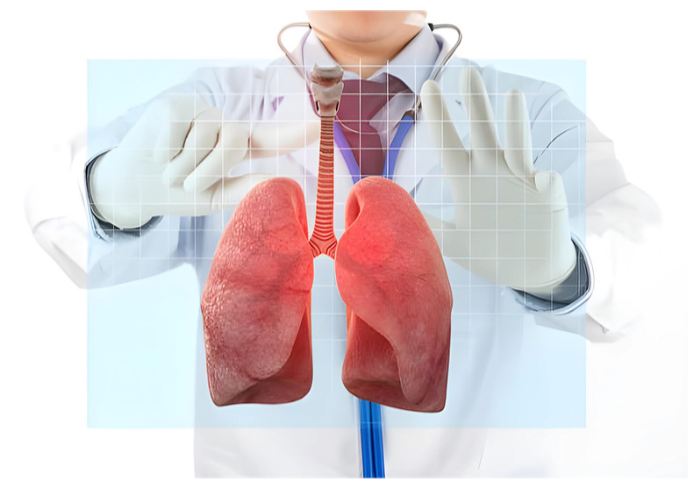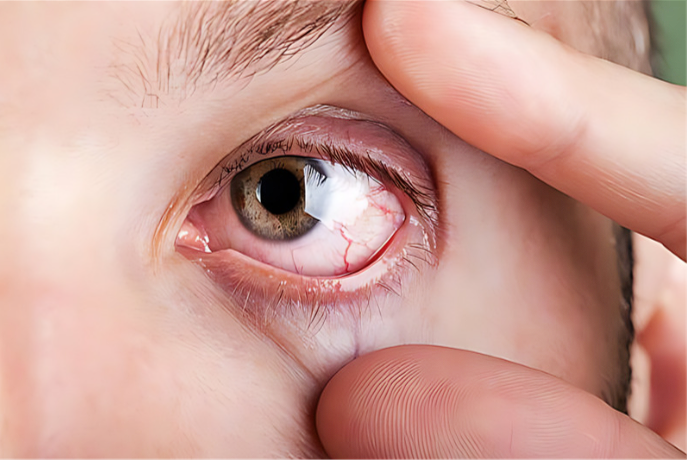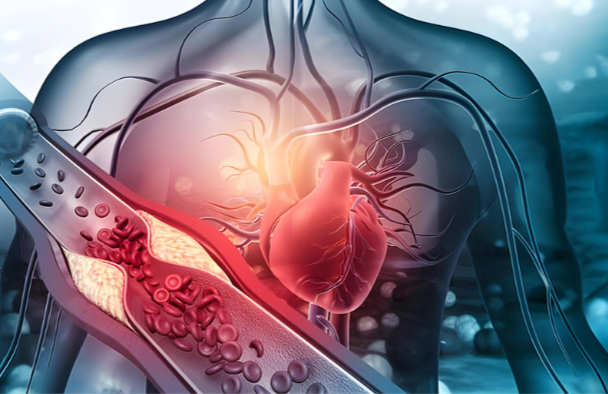Joint Health
What are the Complications of Rheumatoid Arthritis?
While joint symptoms are characteristic with rheumatoid arthritis (RA), the disorder can also have systemic complications, affecting many organs and systems throughout the body.
Rheumatoid arthritis (RA) is a chronic autoimmune condition that mostly affects the joints, causing inflammation, discomfort, and stiffness. Understanding the consequences of rheumatoid arthritis is critical for effective management and preventive care.
This article delves into the various complications of rheumatoid arthritis, which include joint deformities and disability, as well as cardiovascular problems, respiratory troubles, and an increased susceptibility to infection. By shining light on these problems, RA patients and healthcare professionals may collaborate to enhance treatment strategies, reduce risks, and improve overall health outcomes for those impacted by this difficult condition.

Understanding the Complications of Rheumatoid Arthritis
Rheumatoid arthritis (RA) can lead to various complications that affect different parts of the body. These complications may develop over time and vary in severity from person to person. Some common complications of rheumatoid arthritis include:
- Joint Damage: RA induces inflammation in the synovium, the joint’s lining, resulting in cartilage and bone deterioration. Over time, this can cause joint abnormalities, stiffness, and loss of function.
- Cardiovascular Disease: People with RA are at a higher risk of having cardiovascular disorders such heart attacks and strokes. Chronic and systemic inflammation caused by RA lead to the development of cardiovascular problems.
- Osteoporosis: RA-related inflammation can cause bone loss and osteoporosis, which raises the risk of fractures, particularly in the wrists, hips, and spine.
- Respiratory Complications: RA can damage the lungs, resulting in disorders such interstitial lung disease and pleurisy, which cause difficulty breathing, coughing, and chest pain.
- Rheumatoid Nodules: These solid lumps of tissue can form beneath the skin, frequently near pressure sites or joints afflicted by RA. While normally harmless, they can become inflamed or infected.
- Eye Complications: RA-related inflammation can cause dry eye syndrome, scleritis, and uveitis. These issues might result in eye pain, redness, and vision abnormalities.
- Infections: RA and its therapies, particularly immunosuppressive medicines, might increase the likelihood of infection. People with RA are more prone to infections like pneumonia and urinary tract infections.
- Anemia: Chronic inflammation caused by RA can result in anemia, which is defined by a low red blood cell count. Anemia can lead to weariness, weakness, and shortness of breath.
- Increased Cancer Risk: Some studies indicate that people with RA may be at a slightly greater risk of some cancers, while the specific association is unknown.
It’s essential for individuals with rheumatoid arthritis to work closely with their healthcare providers to monitor for and manage these complications effectively. Early detection and treatment can help minimize the impact of complications and improve overall quality of life for those living with RA.

Rheumatoid Arthritis and the Heart
Rheumatoid arthritis (RA) is a condition that affects the joints, but it can also have serious consequences for heart health. Individuals with RA have a higher chance of developing cardiovascular illnesses than the general population. Several variables contribute to the increased risk:
- Inflammation: RA causes chronic inflammation throughout the body, including the cardiovascular system. This inflammation can harm blood vessels and raise the risk of atherosclerosis (hardening and constriction of the arteries), which can result in heart attacks and strokes.
- Systemic Effects: RA is a systemic autoimmune disease, which means it can impact organs and systems other than the joints. Chronic inflammation in RA can cause systemic effects such as accelerated atherosclerosis, endothelial dysfunction (damage to the inner lining of blood vessels), and increased arterial stiffness, all of which raise cardiovascular risk.
- Traditional Risk Factors: In addition to the inflammation caused by RA, people with the condition are more likely to have traditional cardiovascular risk factors such hypertension, dyslipidemia (abnormal cholesterol levels), obesity, and diabetes. These factors raise the risk of cardiovascular illness in patients with RA.
- Medications: Certain medications used to treat RA, such as corticosteroids and nonsteroidal anti-inflammatory drugs (NSAIDs), may raise the risk of cardiovascular events. Long-term corticosteroid usage, for example, can cause hypertension, dyslipidemia, and insulin resistance, all of which increase cardiovascular risk.
- Reduced Physical Activity: The pain, stiffness, and joint deterioration associated with RA can cause a decrease in physical activity. Sedentary behavior increases the risk of cardiovascular disease, as regular exercise is required to maintain heart health.
Given the elevated risk of cardiovascular illness in people with RA, it is critical for healthcare practitioners to aggressively evaluate and manage cardiovascular risk factors. This involves regular blood pressure, cholesterol, and blood glucose checks, as well as advocating lifestyle changes such as quitting smoking, eating properly, exercising regularly, and managing weight. By addressing both the inflammatory and traditional cardiovascular risk factors associated with RA, people can lower their overall risk of heart disease and improve their long-term health.

Impact of Rheumatoid Arthritis on the Lungs
Rheumatoid arthritis (RA) typically affects the joints, but it can also have serious effects on lung function. The effect of RA on the lungs can vary greatly between individuals and may include many respiratory complications:
- Interstitial Lung Disease (ILD): is a class of lung illnesses distinguished by inflammation and scarring of the lung tissue (interstitium). RA-associated ILD is one of the most prevalent pulmonary symptoms of RA. It can cause symptoms like shortness of breath, coughing, and reduced activity tolerance. ILD in RA can worsen over time, potentially leading to respiratory collapse if not managed.
- Pleural effusion: occurs when excess fluid builds up between the layers of tissue that line the lungs and chest cavity (pleura). In RA, inflammation can impact the pleura, causing pleuritis (pleural inflammation) and pleural effusions. This might result in chest pain, shortness of breath, and a cough.
- Rheumatoid nodules: Solid lumps that form beneath the skin in places subjected to pressure or friction, such as the elbows. In some circumstances, rheumatoid nodules can form in the lungs. While these nodules are typically asymptomatic, they might produce respiratory symptoms if they grow large enough to restrict airways or rupture, causing inflammation.
- Airway Involvement: RA-related inflammation can damage the airways, resulting in diseases including bronchiolitis and bronchiectasis. Bronchiolitis is an inflammation of the tiny airways (bronchioles), whereas bronchiectasis is characterized by chronic swelling and thickening of the bronchial walls. Both diseases can result in a chronic cough, sputum production, and recurring respiratory infections.
- Increased Risk of Infections: Chronic inflammation and immunosuppressive drugs used to treat RA can raise the risk of respiratory infections such as pneumonia and tuberculosis. Individuals with RA may be more vulnerable to respiratory infections and have more severe symptoms if infected.
- Pulmonary Hypertension: RA-related inflammation can cause pulmonary hypertension, which is defined as high blood pressure in the lungs’ arteries. This can result in shortness of breath, exhaustion, chest pain, and fainting.
Overall, the impact of RA on lung health emphasizes the need for comprehensive monitoring and management of respiratory symptoms in RA patients. Regular pulmonary function tests, imaging studies, and close communication between rheumatologists and pulmonologists are critical for early detection and optimal treatment of RA-related lung problems.

Kidney Complications in Rheumatoid Arthritis
Rheumatoid arthritis (RA) primarily affects the joints, but it can also cause complications with other organs, particularly the kidneys. Kidney issues in RA are less prevalent than joint symptoms, but they can have a substantial influence on overall health. Here are some renal issues associated with rheumatoid arthritis:
- Glomerulonephritis: is an inflammation of the kidney’s glomeruli, which filter waste and excess fluids from the blood. In RA, immune system malfunction and inflammation can produce glomerulonephritis, resulting in symptoms such as blood in the urine, foamy urine, edema in the legs and ankles, and high blood pressure. Glomerulonephritis can lead to chronic kidney disease if not addressed.
- Interstitial Nephritis: Interstitial nephritis is an inflammation of the renal tubules and surrounding tissue. While less prevalent than glomerulonephritis, interstitial nephritis can occur in people with RA, especially as a side effect of some medications used to treat the condition, such as nonsteroidal anti-inflammatory drugs (NSAIDs) and disease-modifying antirheumatic drugs (DMARDs). Symptoms can include decreased urine flow, blood in the urine, fever, and rash.
- Amyloidosis: is a rare but significant complication of RA in which aberrant proteins known as amyloids accumulate in a variety of organs, including the kidneys. Renal amyloidosis can compromise kidney function, resulting in proteinuria, edema, weariness, and weight loss. Early detection and treatment are critical for preventing more kidney damage and consequences.
- Nephrotic Syndrome: Nephrotic syndrome is a set of symptoms that occur when the kidneys leak a lot of protein into the urine, resulting in low protein levels in the blood. While nephrotic syndrome is less prevalent in RA than other renal problems, it can arise from glomerulonephritis or amyloidosis. Symptoms may include frothy urine, edema (especially around the eyes, feet, and ankles), weariness, and weight gain.
- Kidney Stones: Chronic inflammation and some drugs used to treat RA can raise the risk of kidney stones, which are hard deposits that form in the kidneys and can cause significant pain when passed via the urinary tract. Symptoms of kidney stones include severe discomfort in the back, side, abdomen, or groin, as well as blood in the urine, nausea, and vomiting.
- Renal Impairment: Chronic inflammation caused by RA can lead to renal impairment over time, resulting in diminished kidney function and potential consequences such electrolyte imbalances and fluid retention.
Overall, kidney issues in RA are less common than joint symptoms, but they can have a major influence on health and quality of life. Individuals with RA must have their kidney function monitored on a regular basis through blood tests, urine tests, and imaging investigations, as well as collaborate closely with healthcare experts, in order to manage the disease and reduce the risk of kidney problems.

Effects of Rheumatoid Arthritis on the Eyes
Rheumatoid arthritis (RA) primarily affects the joints, but it can also have systemic effects on other regions of the body, such as the eyes. While eye involvement in RA is less prevalent than joint complaints, it can result in a variety of issues that affect vision and overall eye health. Rheumatoid arthritis can have the following affects on the eyes:
- Dry Eyes (Sicca Syndrome): Rheumatoid arthritis can induce inflammation of the tear glands, resulting in decreased tear production and dry eyes. Dry eyes can cause symptoms like redness, itching, burning, and a gritty feeling in the eyes. Severe dryness can cause corneal damage and a higher risk of eye infections.
- Scleritis and Episcleritis: RA-related inflammation can damage the outer layers of the eye, causing scleritis and episcleritis. Scleritis is an inflammation of the sclera, the white area of the eye, that causes eye pain, redness, and sensitivity to light. Episcleritis is inflammation of the episclera, a thin layer of tissue that lies between the sclera and the conjunctiva. It causes comparable symptoms but is usually less severe.
- Keratitis: Inflammation caused by RA can harm the cornea, the clear front section of the eye, resulting in a condition known as keratitis. Keratitis can cause eye pain, redness, impaired vision, light sensitivity, and excessive tear production. Severe keratitis can cause corneal scarring and visual impairment.
- Uveitis: Uveitis is an inflammation of the uvea, the eye’s middle layer that contains the iris, ciliary body, and choroid. RA-related uveitis can result in eye pain, redness, impaired vision, light sensitivity, and floaters. Without immediate treatment, uveitis can progress to glaucoma, cataracts, and permanent vision loss.
- Conjunctivitis: RA-related inflammation can also affect the conjunctiva, which is a thin, transparent membrane that covers the white part of the eye and lines the inner surface of the eyelids. Conjunctivitis, sometimes known as pink eye, causes eye redness, stinging, burning, discharge, and a gritty sensation.
- Retinal Vasculitis: In rare circumstances, RA-related inflammation can damage the blood vessels in the retina, which is the light-sensitive tissue at the back of the eye. Retinal vasculitis can cause vision problems, including floaters, and, in extreme cases, vision loss.
Overall, while eye involvement in RA is infrequent, people with RA should have regular eye exams and report any changes in vision or eye problems to their doctors as soon as possible. Early detection and treatment of eye problems is critical for saving vision and avoiding long-term damage.

Rheumatoid Arthritis and Blood Vessel Health
Rheumatoid arthritis (RA) is defined as a chronic inflammatory disorder that mostly affects joints. However, it can also affect blood vessels, resulting in a variety of cardiovascular issues. Here’s how rheumatoid arthritis can impact blood vessel health:
- Inflammation: RA is distinguished by systemic inflammation that can damage blood vessel walls. Chronic inflammation can cause endothelial dysfunction, in which the lining of blood vessels becomes damaged and unable to regulate blood flow and pressure adequately. This malfunction contributes to the development of atherosclerosis, which is the accumulation of plaque inside arteries, raising the risk of cardiovascular disease.
- Atherosclerosis: People with RA are more likely to develop atherosclerosis than the general population. The chronic inflammation associated with RA can cause plaques to form in the arteries, narrowing the blood vessels and limiting blood flow to essential organs including the heart and brain. Atherosclerosis can cause consequences including coronary artery disease, heart attacks, strokes, and peripheral artery disease.
- Increased Risk of Cardiovascular Events: Individuals with rheumatoid arthritis are more likely to experience cardiovascular events such as heart attacks and strokes than those without RA. Inflammation and endothelial dysfunction in RA lead to the rapid development of atherosclerosis, increasing the risk of cardiovascular problems.
- Vasculitis: In some circumstances, RA-related inflammation can directly damage blood vessels, resulting in a condition known as vasculitis. Vasculitis is an inflammation of the blood vessel walls that can restrict blood flow and cause damage to the organs and tissues fed by the affected vessels. Vasculitis affects blood vessels all over the body, including the skin, nerves, and internal organs.
- Raynaud’s Phenomenon: Raynaud’s phenomenon is a syndrome marked by episodes of decreased blood flow to the fingers and toes, resulting in color changes (usually white, blue, and red) and numbness or tingling. Raynaud’s disease can develop independently of RA, however it is more common in people with autoimmune diseases such as rheumatoid arthritis. Raynaud’s phenomenon occurs when blood vessels spasm in response to cold or stress, reducing blood flow to the extremities briefly.
Overall, the systemic inflammation and immunological dysregulation associated with rheumatoid arthritis can have serious consequences for blood vessel function, raising the risk of cardiovascular disease and other vascular problems. Managing RA successfully with medication, lifestyle changes, and regular monitoring can help reduce inflammation and minimize the effects on blood vessel function, thereby improving cardiovascular health.

Nerve and Muscle Issues in Rheumatoid Arthritis
Rheumatoid arthritis (RA) is largely a joint disease, although it can also damage nerves and muscles. Nerve and muscle problems in RA can be caused by inflammation, compression, or tissue damage as a result of the condition’s inflammatory response. Here are some frequent nerve and muscle problems connected with rheumatoid arthritis:
- Peripheral Neuropathy: RA-induced inflammation can damage peripheral nerves, resulting in a disease known as peripheral neuropathy. Symptoms may include numbness, tingling, burning, weakness, and pain in the hands, feet, arms, or legs. Peripheral neuropathy in RA is frequently induced by nerve compression as a result of joint swelling or entrapment within inflammatory tissue.
- Carpal Tunnel Syndrome: Patients with RA may have compression of the median nerve as it passes through the carpal tunnel in the wrist, resulting in carpal tunnel syndrome. Symptoms may include discomfort, numbness, tingling, and weakness in the hands and fingers. Inflammation and edema in the surrounding tissues might worsen nerve compression in the carpal tunnel.
- Myopathy: Myopathy is a type of muscular condition that causes weakening, discomfort, and dysfunction. In RA, myopathy can be caused by direct muscle inflammation (myositis), decreased physical activity, pharmaceutical side effects (e.g., corticosteroids), or systemic inflammation that impairs muscle function. Myopathy can cause broad muscle weakness, weariness, and problems with mobility and daily tasks.
- Tenosynovitis: Tendon sheath inflammation (tenosynovitis) is frequent in RA and can impair the function of the muscles that control joint mobility. Tenosynovitis may cause muscle weakness, limited range of motion, and difficulties completing fine motor tasks. In severe situations, tendon rupture can occur, further compromising muscle function and joint stability.
- Muscle Wasting (Atrophy): Chronic inflammation and inactivity of afflicted joints and muscles in RA can result in muscle wasting or atrophy over time. Muscle atrophy causes weakness, muscle mass loss, and functional degradation, worsening joint instability and lowering total physical function.
- Functional limits: Nerve and muscle difficulties in RA can cause functional limits, affecting daily activities, job, and leisure activities. Reduced grip strength, trouble with fine motor activities, and muscle stiffness all have an impact on productivity and quality of life.
The treatment of nerve and muscle difficulties in rheumatoid arthritis is often multidisciplinary, involving pharmaceutical interventions (e.g., disease-modifying antirheumatic medicines, pain medications), physical therapy, occupational therapy, and lifestyle changes.
Treatment aims for RA include reducing inflammation, enhancing muscle strength and flexibility, and optimizing joint function. Early diagnosis, regular monitoring, and comprehensive care strategies are critical for effectively managing nerve and muscle abnormalities and improving rheumatoid arthritis outcomes.
Disclaimer: Please note that Discoverybody has taken great care to ensure that all information provided is comprehensive and up to date. However, you should not use this article as a substitute for the expertise that a licensed healthcare professional can offer. It’s always a good idea to talk to your doctor before taking any medication.
Sources Expanded:
Everything You Want to Know About Rheumatoid Arthritis. (2023, February 18). Healthline. https://www.healthline.com/health/rheumatoid-arthritis
Rheumatoid arthritis – Symptoms and causes – Mayo Clinic. (2023, January 25). Mayo Clinic. https://www.mayoclinic.org/diseases-conditions/rheumatoid-arthritis/symptoms-causes/syc-20353648
Rees, M. (2023, April 5). What’s the link between rheumatoid arthritis and heart disease? https://www.medicalnewstoday.com/articles/rheumatoid-arthritis-and-heart-disease
Learn About The Connection Of Arthritis and Heart Disease Now. (n.d.). https://www.arthritis.org/health-wellness/about-arthritis/related-conditions/other-diseases/arthritis-and-heart-disease
Rheumatoid arthritis: Can it affect the lungs? (2023, September 21). Mayo Clinic. https://www.mayoclinic.org/diseases-conditions/rheumatoid-arthritis/expert-answers/rheumatoid-arthritis/faq-20058245#:~:text=The%20lung%20problems%20most%20often,weakness%20and%20loss%20of%20appetite.
Cherney, K. (2022, August 30). What to Know About Rheumatoid Arthritis (RA) and the Lungs. Healthline. https://www.healthline.com/health/advancing-rheumatoid-arthritis/rheumatoid-arthritis-lungs#lung-nodules
Sissons, B. (2023, April 5). Can rheumatoid arthritis cause kidney disease? https://www.medicalnewstoday.com/articles/rheumatoid-arthritis-kidney-disease#protecting-the-kidneys
Fennessy, D. (2023, March 3). Rheumatoid Arthritis and Your Eyes: Complications. EverydayHealth.com. https://www.everydayhealth.com/rheumatoid-arthritis/living-with/rheumatoid-arthritis-eye-complications/
Articles. (n.d.). https://www.cedars-sinai.org/health-library/diseases-and-conditions/r/rheumatoid-vasculitis.html
Cox, C. (2022, April 5). Rheumatoid Arthritis and Neuropathy. WebMD. https://www.webmd.com/rheumatoid-arthritis/ra-neuropathy
Trusted Health, Wellness, and Medical advice for your well-being



